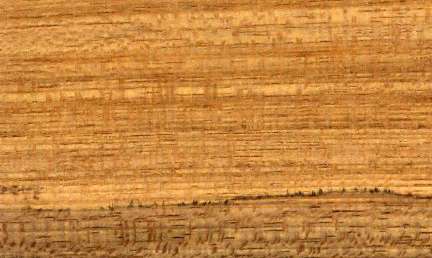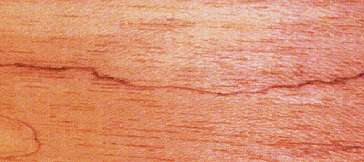 
Aniouketi (Pachypodanthium staudtii)
Family: Annonaceae
Common names: Aniouketi, Djirrowa-tue, Fale, Gpaladio, N'tom, Ntom, Okianga, Okyira, Pae-aduasa, Zree-chu
Distributed in: Cameroon, Congo, Gabon, Ghana, Ivory Coast, Liberia, Nigeria, Sierra Leone, Zaire (Africa)
Distribution overview: The species is distributed in West Africa, and is found primarily in Ghana and Liberia.
Common uses: Balusters, Barge fenders, Boxes and crates, Building construction, Building materials, Cabinetmaking, Casks, Chairs, Chests, Concealed parts (Furniture), Construction, Cooperages, Decorative plywood, Desks, Dining-room furniture, Docks, Dockwork, Domestic flooring, Dowell pins, Dowells, Drawer sides, Excelsior, Fine furniture, Floor lamps, Flooring, Food containers, Furniture , Furniture components, Furniture squares or stock, Furniture, Harbor work, Hatracks, Interior construction, Interior trim, Joinery, Kitchen cabinets, Light construction, Living-room suites, Marine construction, Millwork, Mine timbers, Moldings, Naval architecture, Office furniture, Packing cases, Plywood, Poles, Posts, Turnery, Vats, Veneer: decorative
Environment profile: Vulnerable
Tree size: Trunk diameter is 150-200 cm
Colors: the heart isYellow to golden-yellow to orange, Yellow/Brown and the sapwoodWhite, Yellow.The grain isWavy, the textureMedium coarse to coarseand the lusterLustrous
Natural durability: Susceptible to insect attack, Very durable
Odor: No specific smell or taste
Silica Content: High
Kiln Schedules: Kiln Drying Rate (in days) is rapid
Kiln Drying Rate: Rapid (<10 days for boards < 32 mm, to <30 days for boards >= 63 mm)
Drying Defects: Slight surface checking, Splitting
Ease of Drying: Slowly
Tree Identification: Bole/stem form is straight
Comments: The leaf and bark of the tree are reported to contain alkaloids
Blunting Effect: Slight blunting effect on cutters
Boring: Fairly difficult to very difficult
Carving: Good results
Cutting Resistance: Rather low
Gluing: Satisfactory gluing properties
Mortising: Poor to Very Poor
Moulding: Fairly Difficult to Very Difficult
Movement in Service: Fairly Difficult to Very Difficult
Nailing: Pre-Boring Recommended, Satisfactory nailing properties
Planing: Very Good to Excellent
Resistance to Impregnation: Resistant sapwood
Response to hand tools: Responds well to hand tools
Routing recessing: Fairly Difficult to Very Difficult
Sanding: Easy to sand
Veneering qualities: Veneers easily, Veneers moderately easy
Steam bending: Fair to Good Results
Screwing: Pre-boring recommended, Satisfactory screwing properties; Turning: Poor to Very Poor Results
Painting: Takes paint well
; Polishing: Very Good to Excellent; Varnishing: Varnishes easily with little or no surface preparation
;
- Numerical data Metric
- Numerical data English
- Strength properties
- References
 |
 |
 |
 |
| Item |
Green |
Dry |
Metric |
| Specific Gravity |
|
|
|
| Density |
|
721 |
kg/m3 |
| Bending Strength |
793 |
1233 |
kg/cm2 |
| Crushing Strength |
449 |
691 |
kg/cm2 |
| Hardness |
|
751 |
kg |
| Impact Strength |
|
|
cm |
| Shearing Strength |
|
120 |
kg/cm2 |
| Stiffness |
119 |
137 |
1000 kg/cm2 |
| Tangential Shrinkage |
9 |
|
% |
| Radial Shrinkage |
4 |
|
% |
| Weight |
705 |
560 |
kg/m3 |
| Maximum Load |
0,35 |
0,49 |
cm-kg/cm3 |
| Toughness |
|
|
cm-kg |
| Static Bending |
|
|
kg/cm2 |
|
 |  |  |  | | Item | Green | Dry | English | | Bending Strength | 11293 | 17544 | psi | | Density | | 45 | lbs/ft3 | | Hardness | | 1657 | lbs | | Maximum Crushing Strength | 6398 | 9839 | psi | | Shearing Strength | | 1713 | psi | | Stiffness | 1701 | 1956 | 1000 psi | | Work to Maximum Load | 5 | 7 | inch-lbs/in3 | | Weight | 44 | 35 | lbs/ft3 | | Radial Shrinkage | 4 | | % | | Tangential Shrinkage | 9 | | % | | Volumetric Shrinkage | 12 | | % | |
Density (dry weight) = 46-52 lbs/cu. ft.
Shrinkage, Tangential = fairly large
Max. crushing strength = high
Shrinkage, Volumetric = fairly large
Shrinkage, Tangential = large
Density (dry weight) = 38-45 lbs/cu. ft.
Bending strength (MOR) = high
Shrinkage, Radial = small
Shrinkage, Radial = fairly large
Modulus of Elasticity (stiffness) = low
Bending strength (MOR) = medium
Shrinkage, Radial = moderate
Shrinkage, Radial = large
Modulus of Elasticity (stiffness) = high
Hardness (side grain) = medium
Work to Maximum Load = very low
Shrinkage, Volumetric = moderate
Shrinkage, Tangential = moderate
Shearing strength (parallel to grain) = very low
Shearing strength (parallel to grain) = low
Modulus of Elasticity (stiffness) = very low
Max. crushing strength = very high
Hardness (side grain) = soft
Hardness (side grain) = hard
Bending strength in the air-dry condition (about 12 percent moisture content) is very high
Compression strength parallel to grain, or maximum crushing strength, is very high - higher than in Teak or Hard maple.
Cooper, G.P., Record, S.J.,1931,The Evergreen Forests of Liberia,Yale School Forestry Bulletin,31,pp1-153Dudek, S.,1981,Lesser Known Liberian Timber Species,German Agency for Technical Cooperation GermanyHughes, J.F.,1971,The Principal Timber Trees of Cameroon,Unpublished dataIrvine, F.R.,1961,Woody Plants of Ghana,O.U.P. LondonJane, F.W.,1954,The Structure of World Timbers - 21 Muganga Musine Pilon and Hura,Timber Technology,62(2175, pp15-17Keay, R.W.J., et al,1960,Nigerian Trees Vol.1,Nigeria Federal Department of Forest Research, IbadanKryn, J.M., Forbes, E.W.,1959,The Woods of Liberia,U.S.A. Department of Agriculture,Forest Products Laboratory, Madison,,Report No. 2159Lebacq, L., Dechamps, R.,1967,Contribution a un Inventaire de Forets du Nord-kasai,Musee Royal de L'Afrique Centrale Belgium Annals Series 8 No.5Sallenave, P.,1964,Proprietes Physiques et Mecaniques des Bois Tropicaux (Premier Supplement,C.T.F.T. Publ.,no.23Takahashi, A.,1978,Compilation of Data on the Mechanical Properties of Foreign Woods (Part,III) Africa,Shimane University, Japan, Research Report on Foreign Wood No. 7
|









